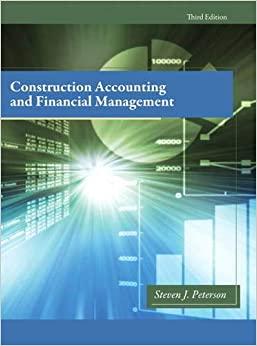Question
1. The Sarbanes-Oxley Act applies only to companies whose stock is traded on public exchanges. a. b. True False 2. There are three internal control
1. The Sarbanes-Oxley Act applies only to companies whose stock is traded on public exchanges. a. b. True False 2. There are three internal control objectives and they are to safeguard the company's reputation, ensure accurate financial reports, and ensure compliance with applicable laws. a. b. True False 3. Sarbanes-Oxley requires sole proprietorships to maintain strong and effective internal controls and thus deter fraud and prevent misleading financial statements. a. b. True False 4. Separating the responsibilities for purchasing, receiving, and paying for equipment is an example of the control procedure: separating operations, custody of assets, and accounting. a. b. True False 5. A customer's check received in settlement of an account receivable is considered cash. a. b. True False 6. For a strong internal control system over cash, it is important to have the duties related to cash receipts and cash payments divided among different employees. a. b. True False 7. If the balance in Cash Short and Over at the end of a period is a credit, it indicates that cash shortages have exceeded cash overages for the period. a. True b. False 8. If the balance in Cash Short and Over at the end of a period is a credit, it should be reported as "Other Income" on the income statement. a. b. True False 9. An example of good internal controls over cash payments is the taking of all cash discounts offered. a. True b. False 10. The bank often informs the company of bank service charges by including a credit memo with the monthly bank statement. a. b. True False 11. Bank customers are considered creditors of the bank so the bank shows their accounts with credit balances on the bank's records. a. b. True False 12. In preparing a bank reconciliation, the amount of deposits in transit is deducted from the balance per bank statement. a. b. True False 13. In preparing a bank reconciliation, the amount of outstanding checks is added to the balance per bank statement. a. b. True False 14. In preparing a bank reconciliation, the amount indicated by a debit memo for bank service charges is added to the balance per company's records. a. b. True False 15. A check for $342 was erroneously charged by the bank as $432. In order for the bank reconciliation to balance, you must add $90 to the bank statement balance. a. b. True False 16. In preparing a bank reconciliation, the amount indicated by a credit memo for a note receivable collected by the bank is added to the balance per company's records. True a. b. False 17. Which of the following is not an element of internal control? a. b. C. d. risk assessment monitoring information and communication cost-benefit considerations


Step by Step Solution
There are 3 Steps involved in it
Step: 1

Get Instant Access to Expert-Tailored Solutions
See step-by-step solutions with expert insights and AI powered tools for academic success
Step: 2

Step: 3

Ace Your Homework with AI
Get the answers you need in no time with our AI-driven, step-by-step assistance
Get Started


